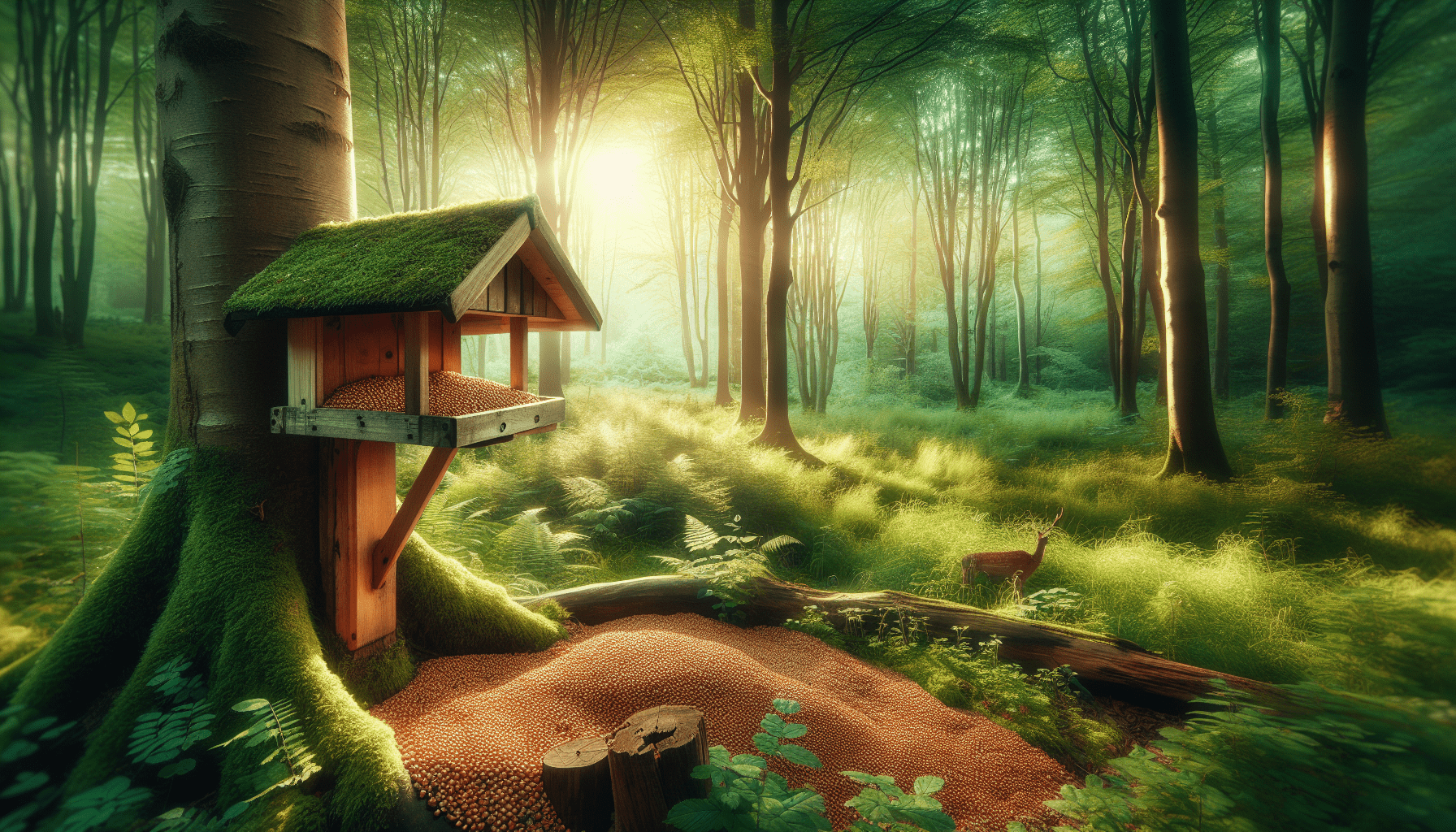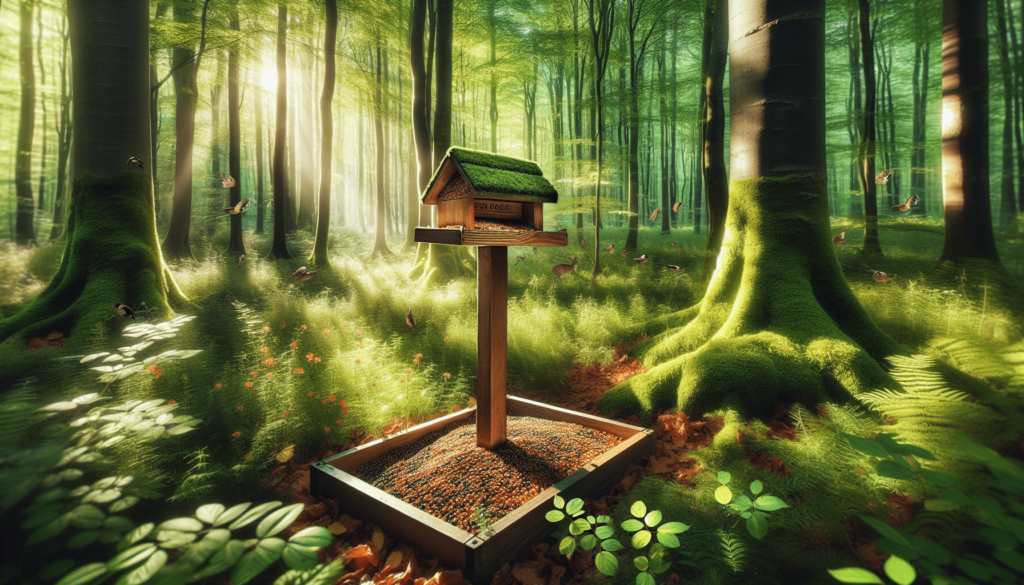
Have you ever wondered about the best ways to enjoy the beauty of nature while also ensuring the safety of wildlife, especially deer? Feeding deer can be a delightful experience, watching them graze peacefully in your yard or nearby area. However, it’s essential to think about wildlife safety when setting up deer feeders. It’s not just about making sure the feeders are filled; it involves understanding the habits of deer, the ecosystem, and the potential impact of feeders on their health.
If you’re ready to create a welcoming environment for these graceful creatures while keeping their safety at the forefront, let’s go through some best practices for managing deer feeders responsibly.
Understanding Deer Behavior
The Natural Habitat of Deer
Deer are naturally wild creatures that roam vast territories in search of food, water, and shelter. In their natural habitat, they graze on a diverse diet that includes grasses, leaves, and fruits. When you set up deer feeders, it’s vital to consider how these feeders will integrate into their established routines.
Seasonality and Deer Feeding Patterns
deer feeding patterns shift with the seasons. In the spring and summer, they often find plenty of foraging options, while fall and winter may bring food scarcity. As you think about when to provide supplemental food, understanding these seasonal shifts will help you time your feeding efforts appropriately.
Choosing the Right Deer Feeder
Types of Deer Feeders
When selecting a deer feeder, you have a few options to consider:
| Type of Feeder | Description | Benefits |
|---|---|---|
| Gravity Feeders | Feed is dispensed as deer eat, usually through gravity. | Simple design, low maintenance. |
| Tripod Feeders | Elevated feeders that allow deer to feed without disturbing the ground. | Reduces waste and keeps food clean from contaminants. |
| Trough Feeders | Long, open feeders that allow many deer to feed at once. | Social feeding, but can lead to overcrowding. |
| Automatic Feeders | Mechanical feeders that dispense food at specific intervals. | Consistent feeding schedule, less contamination. |
Each type has its benefits and considerations, so think about your specific needs and environment when making a choice.
Location Matters
where you place the feeder is just as crucial as the type you choose. Aim for a location that is away from high traffic areas, both human and animal. Look for a site with natural cover to provide deer with a sense of security while they eat. This placement not only supports their natural behavior but also minimizes the risk of accidents.

Selecting the Right Deer Feed
The Importance of Quality Feed
Deer diets should be rich in nutrients, so providing a high-quality feed is of utmost importance. Commercial feeds can vary, so look for options that include:
- Protein sources (like soy or alfalfa)
- Minerals (like calcium and phosphorus)
- Vitamins
Homemade Feed Alternatives
You might also consider creating your own deer feed. Here’s a simple mix you could try:
- 50% Corn
- 25% Oats
- 25% Protein pellets
However, ensure any homemade blend is safe and introduces necessary nutrients without harmful additives. Do some research or consult a local wildlife expert for advice on creating balanced feed.
Maintaining Deer Feeders
Regular Cleaning and Maintenance
Just filling the feeder isn’t enough; you must also be mindful of maintenance. Regularly clean the feeders to prevent the growth of mold or bacteria that could harm deer health. Here are a few tips for proper maintenance:
- Wash feeders every couple of weeks.
- Use a solution of water and mild soap, then rinse thoroughly.
- Check for and remove any stale food or debris.
Monitoring Deer Health
While enjoying the sight of deer feeding, keep an eye on their health. Observe their behavior and condition. If you notice any deer that appear sick or injured, reporting it to local wildlife authorities may be necessary.

Avoiding Human-Wildlife Conflicts
Understanding Attraction
Deer feeders can attract not just deer but other wildlife and even domestic animals. While it might be wonderful to see a variety of wildlife, sometimes it breeds conflicts that could compromise safety. For instance, if you attract raccoons or bears, it could spell trouble for everyone involved.
Limits on Feeding
Set reasonable limits on how much and how often you feed deer. Overfeeding can lead to dependency, which disrupts their natural foraging behavior. Additionally, too much food can create competition among deer and lead to aggressive behaviors.
Legal and Ethical Considerations
Local Regulations
Before setting up a deer feeder, it’s smart to check local regulations regarding wildlife feeding. Some areas have specific laws governing when, where, and how you can feed wildlife. This is in place to ensure the safety and health of various species.
Ethical Feeding Practices
Being ethical means considering not just the deer but the entire ecosystem. Avoid practices that could harm the environment or other animals. For instance, never feed deer food that has been processed for human consumption, like bread or pastries. Stick to natural deer foods to ensure their health and safety.
Dealing with Feeding Challenges
Attracting Pests
As mentioned earlier, feeding deer can attract other animals that may not be welcome in your yard. Here are a few strategies to minimize unwanted visitors:
- Use covered feeders to keep pests away.
- Elevate feeders to keep food off the ground.
- Monitor for signs of other animals, and adjust your feeding strategy accordingly.
Deer Overpopulation
In areas where deer populations are particularly high, supplemental feeding can sometimes encourage overpopulation. Consider the ecological balance and avoid contributing to any population spikes.
Seasonal Adaptations
In warmer months, deer might have plenty of food options on their own. During these times, consider reducing the amount you feed. This not only helps save feed costs but ensures that deer remain accustomed to foraging for their natural diet.
Community and Wildlife
Building a Responsible Community
Engaging with your local community can amplify the positive aspects of deer feeding. Share your knowledge and experiences with neighbors to foster responsible wildlife stewardship. Hosting community workshops or discussions around wildlife safety can be constructive.
Monitoring Local Wildlife Populations
Participate in local wildlife preservation efforts. Engaging with experts and joining wildlife monitoring programs can provide valuable insights into the health of the deer population in your area. This effort strengthens your bond with the natural world while ensuring you’re doing your part to protect it.
Keeping Yourself Safe
Understanding Zoonotic Diseases
Just as deer can face health risks, humans can encounter zoonotic diseases—those that can be transmitted between animals and humans. Diseases like Lyme disease, which ticks can carry, can be a concern when spending time in areas where deer roam. Take precautions, such as wearing long sleeves and using insect repellent.
Mindful Interaction
While it’s natural to want to engage with deer, remember that they are wild animals. Make sure to observe from a distance. Approaching or attempting to pet them can lead to unpredictable behaviors.
The Bigger Picture
Ecological Balance
Consider the role of deer within the broader ecosystem. They play a critical part in seed dispersal and maintaining plant populations. By responsibly managing deer feeders, you contribute positively to the ecological balance.
Wildlife Conservation Efforts
Being a responsible deer feeder also aligns with wildlife conservation efforts. Supporting local organizations that strive to protect deer and their habitats can amplify your impact. Consider volunteering your time or donating to initiatives focused on wildlife conservation.
Conclusion
As you engage in feeding deer, remember that your actions can have lasting effects on these beautiful creatures and the surrounding environment. By implementing best practices, you ensure the safety and well-being of deer while nurturing a rich connection with nature. With a thoughtful approach, you can enjoy the joy of deer feeding while contributing to their health and safety, creating a harmonious relationship that benefits both wildlife and yourself. So, as you set up your deer feeder, keep in mind that every step you take towards responsible feeding enriches the lives of these magnificent animals and strengthens your bond with the natural world around you.





